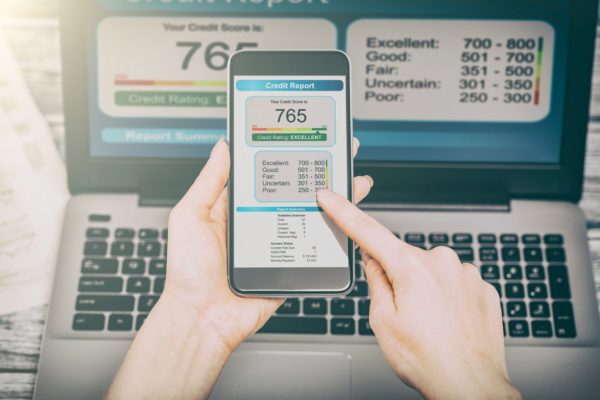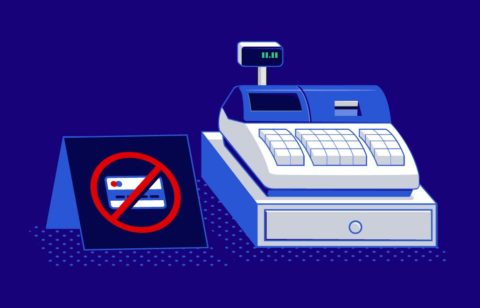Did you know that if you have a low credit score it’s costing you money? This is because the lower your credit score the higher the interest rates you’ll be charged. If you have bad credit you’re also being charged higher insurance premiums, higher credit card interest rates and if you have a mortgage it, too, will have a higher interest rate. In short, you need credit repair as bad credit can cost you literally thousands of dollars over the course of your lifetime.
Are there errors in your credit reports?
You could actually have bad credit because of errors in your credit reports. There may be something in one or more of your reports that’s decades old or one item that showing up multiple times. It would be pretty unfair for you to pay higher interest rates because of bad information in your credit reports.
You can get your credit reports free once a year from the three credit bureaus – Experian, Trans-Union and Equifax. Or you could go to the site www.annualcreditreport.com and get the three of them at once.
Review your reports carefully to see if they contain errors. If you find any you will need to dispute them with the appropriate credit bureau(s). The best way to do this is to write a letter disputing the erroneous information, including whatever documentation you have that proves the mistake.
How does it work?
Just as you can dispute errors in your credit report yourself you can also do DIY credit repair. However, the process can be both time consuming and complicated, which is why many people choose to hire a credit repair company instead of attempting to do it themselves. The way good credit repair companies work is that the first thing they will do is pull your credit reports from the three credit bureaus and then then review them carefully to identify those issues that are damaging your credit. The reason they get all three of your reports is because each of the credit bureaus has its own data suppliers or those credit card companies, debt collectors, lenders, etc. that report your information to them. It’s more than possible that you could have an error in one credit report but not in the others.
If the credit repair company finds errors in your credit report it will ask you for whatever supporting documentation you can provide. As an example of this, there could be a debt consolidation loan on one of your credit reports that was your husband’s responsibility under your divorce decree. You can use your decree to prove it shouldn’t be in your report.
When the credit bureau receives your letter of dispute and supporting documentation it will then work with your credit repair company to decide if the erroneous items should be removed from your credit report. It will also “scrub” questionable items in your credit report against laws such as the Fair Credit Reporting Act and the Fair Credit Billing Act. Be aware that in some cases it may be tough for you to determine what supporting documentation to include. Fortunately, this is another area where you could get help from a credit repair company. As an example of this, you could have been the victim of identity theft so that there’s a fake account on one of your credit reports. It can be tough to prove that the account isn’t yours as you would naturally not have any documents supporting your claim But a credit repair company will know how to work with the credit bureaus to get the issue resolved.
How long will this take?
If you or the credit repair firms find there is inaccurate negative information in your credit reports getting it deleted is one of the fastest ways to improve your credit score. This is because the credit reporting bureaus must respond and resolve the dispute with you within 30 days. But no credit repair company will be able to tell you just when your credit score will improve since some credit issues can be much more complex than others.
 Are there trustworthy credit repair companies?
Are there trustworthy credit repair companies?
You may have seen advertisements from credit repair companies that promise they can get you a 100-point boost in your credit score. If that sounds fishy to you it’s because it is. No legitimate credit repair company will promise results like this. You need to stay away from anyone that makes these kinds of promises.
Here’s what you need to look for to know that the credit repair company can be trusted.
They want to learn your story. It’s critical for the credit repair company to learn why it is that you want to dispute an item in your report. This is so they can make sure the credit bureaus uphold the three standards of accuracy, fairness and full substantiation.
They want you to understand your rights. Before you sign its contract a trustworthy credit repair firm will review your consumer credit rights with you and if you have any questions regarding them it should be able to provide you with answers.
They can explain things in detail. A good credit repair company knows exactly what they can do and can’t do for you. It should be able to thoroughly explain the services it can provide so that you will understand exactly what to expect.
As we have noted there are also credit repair companies that can’t b trusted. Here’s a video with the top 10 warning signs of companies you might want to avoid.’
https://www.youtube.com/watch?v=_5M22DUu4b8
Get your credit report – free
As noted above, you are entitled to get your credit reports free under the Fair Credit Reporting Act. You can also get your credit score free from any of the three credit reporting bureaus or on sites like CreditSesame and CreditKarma. The scores you can get from any of the sources will not be your true FICO score but it will be close enough for you to know where you stand. As an example of this, you might get a credit score of 585 from, say, Credit Sesame while your true FICO score is 575.
Frequently Asked Questions about credit repair
Q. Are credit repair companies legitimate?
A. There are definitely legitimate repair companies. Three of the best-rated are Lexington Law, CreditRepair.com and The Credit People. Ones you should probably avoid include Credit Nerds, DSI Solutions and iHome Easy Credit.
Q. Why not to use credit repair services
A. If you get your three credit reports and find there are only a few errors that could be negatively affecting your credit, you really don’t need a credit repair service. You can dispute them yourself. However, if there is the same error on several of your credit reports you must dispute it with all the credit bureaus. In other words, disputing an error on one of your credit reports will have no effect on the others.
Q. How much does credit repair cost?
A. credit repair firms generally charged by the month until they have resolved all of your issues. For example, Lexington Law charges $79.95, $99.95 or $119.95 a month depending on your credit needs until it has delivered all of its services. Credit repair.com charges a flat $99.95 a month until it has resolved all of your issues.
Q. Why is credit repair important?
A. Credit repair is important because bad credit can cost you a lot of money. A low credit score of 580 or below means you’re being charged higher interest rates on your credit cards, you’re paying higher insurance premiums and if you can get a mortgage it, too, will have a higher interest rate.
Q. Are credit repair fees tax-deductible?
A. You might think that if you hire an attorney for credit repair you should be able to deduct those costs. Unfortunately, you can’t. This is because legal fees are basically personal in nature and can’t be deducted. You also cannot deduct any costs related to getting your credit reports or your credit score.








